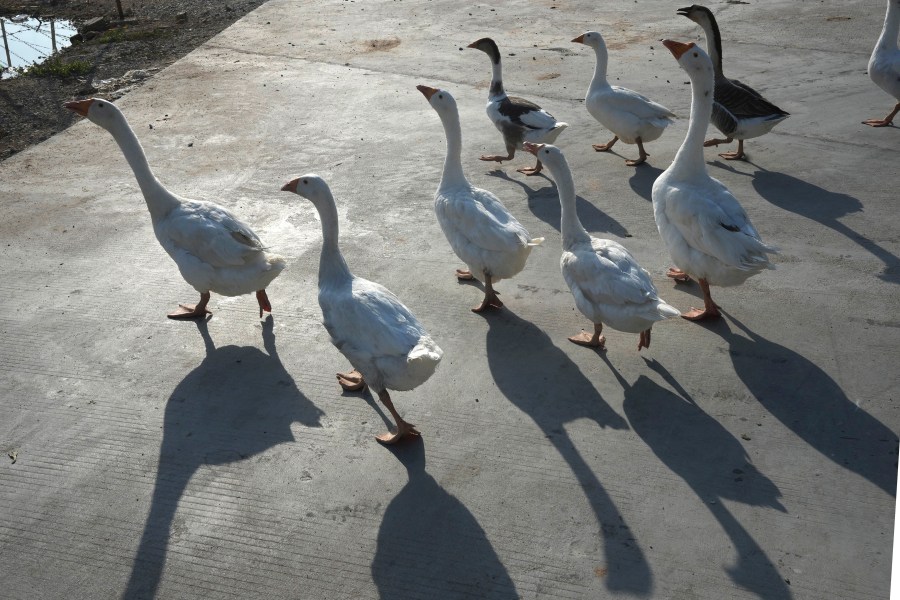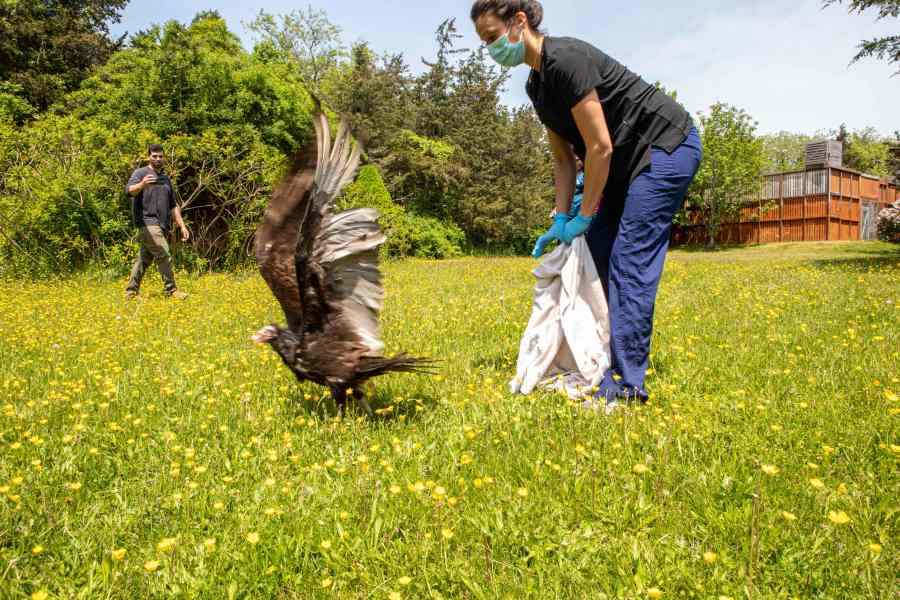Ex CDC director predicts bird flu pandemic: What to know
- Over 40 cattle herds across the country have confirmed cases of bird flu
- 'Extremely rare' for the virus to spread from one human to another: CDC
- Redfield: 'Bird flu will enter humans,' could have 'significant mortality'
Testing on staging11
(NewsNation) — Is a bird flu pandemic imminent? Former Centers for Disease Control and Prevention (CDC) Director Robert Redfield seems to think so, he says it’s just a matter of when that will be.
In the last two years, bird flu has been blamed for the deaths of millions of wild and domestic birds worldwide. However, it seems to have hardly touched people.
Redfield told NewsNation’s Brian Entin on Friday that he believes “bird flu will enter humans” and that it could have “significant mortality.”
He also discussed the growing concern for bird flu, as the virus has been detected in dozens of cattle across the country, and the World Health Organization identified the first human death in Mexico.
“I really do think it’s very likely that we will, at some time, it’s not a question of if, it’s more of a question of when we will have a bird flu pandemic,” Redfield said.
He also noted that bird flu has a “significant mortality” when it enters humans compared to COVID-19. Redfield predicts the mortality is “probably somewhere between 25 and 50% mortality.” NewsNation noted that the death rate for COVID-19 was 0.6%.
What is bird flu and how does it spread?
Avian influenza, commonly called bird flu, is an infection from a type of influenza virus that usually spreads in birds and other animals, according to the Cleveland Clinic.
The virus usually spreads in birds but can also infect humans if they come in contact with an infected animal’s body fluid, “like spit, respiratory droplets or feces,” the medical center said.

It can also be spread if a human breathes in small dust particles in animal habitats or gets it into their eyes, nose or mouth after touching animal body fluids. People who work with poultry, waterfowl and livestock are most vulnerable to catching the virus.
It’s “extremely rare” for the virus to spread from one human to another, according to the Cleveland Clinic.
What has to happen for it to spread between humans?
Redfield said he knows exactly what has to happen for the bird flu virus to get to the point where it will spread to humans because he’s done lab research on it.
Scientists have found that five amino acids must change in the key receptor for bird flu to gain a propensity to bind to a human receptor “and then be able to go human-to-human” as COVID-19 did, Redfield said.

“Once the virus gains the ability to attach to the human receptor and then go human to human, that’s when you’re going to have the pandemic,” he said. “And as I said, I think it’s just a matter of time.”
Redfield noted that he doesn’t know how long it will take for the five amino acids to change, but since it is being detected in cattle herds across the country, he is a bit concerned.
Researchers still don’t know how the recent outbreak of bird flu spread to cattle, but the leading theory is that it has to do with milking machines that could be carrying the virus, Jenna Guthmiller, an assistant professor of immunology and microbiology at the University of Colorado School of Medicine, said in the university’s journal.
She said high levels of the virus have been found in the cows’ udders, and the infection appears restricted to dairy cows, which furthers this possibility.
“Influenza A has never been recorded like this in cows before. There’s the occasional cow infected, but they are not a natural host for influenza A viruses, so this is really quite shocking to the field,” she said.
More than 40 cattle herds nationwide have confirmed cases of the virus. The CDC is tracking wastewater treatment sites to pinpoint where the virus is, but the agency said the general public’s current risk of contracting the virus is low.
How does bird flu impact humans and should I be worried?
There have been three confirmed human cases of bird flu this year: One in Texas and two in Michigan.
All three were farmworkers who were directly exposed to dairy cattle presumed to be infected with bird flu.

The first two infected people reported relatively mild symptoms, including eye inflammation, state officials said.
The last case, reported Friday in Michigan, had different symptoms, including upper respiratory problems, sore throat, cough and congestion, according to the CDC.
Dr. Nirav Shah, the CDC’s principal deputy director, said during a news briefing there’s no indication yet that the virus is spreading from person to person, although the risk does increase with respiratory symptoms.
“Simply put, someone who’s coughing may be more likely to transmit the virus than someone who has an eye infection like conjunctivitis,” he said.
The CDC is monitoring 350 people who have been exposed to infected dairy cows for flu-like symptoms. Thirty-nine people have been tested for the virus, according to agency data.
The agency says the current risk of contracting the virus to the general public is low, as these cases are rare in humans.
“Right now, the H5N1 bird flu situation remains primarily an animal health issue. However, the CDC is watching this situation closely and taking routine preparedness and prevention measures in case this virus changes to pose a greater human health risk,” the CDC said.
What are the symptoms of bird flu in humans?
According to the CDC, symptoms of bird flu in humans range from eye redness or mild flu-like upper respiratory symptoms to pneumonia, high fever, cough, sore throat, runny or stuffy nose, muscle or body aches, headaches, fatigue, and shortness of breath or difficulty breathing.
Less common signs and symptoms include diarrhea, nausea, vomiting or seizures, according to the agency.

The bird flu vaccine is made using eggs, which has concerned some medical researchers because of the prospect that wild birds could carry the virus into the henhouses needed in vaccine production.
To make raw material for an influenza vaccine, the virus is grown in millions of fertilized eggs. Sometimes it doesn’t grow well, or it mutates to a degree that the vaccine product stimulates antibodies that don’t neutralize the virus — or the wild virus mutates to an extent that the vaccine doesn’t work against it.
But a new experimental mRNA vaccine developed by researchers at the University of Pennsylvania’s School of Medicine could help manage the outbreak of the H5N1 virus seen in birds and cattle and also prevent human infections.
Unlike other influenza inoculations, mRNA vaccines do not require eggs for their development.
The Associated Press and NewsNation’s Cassie Buchman contributed to this story.
